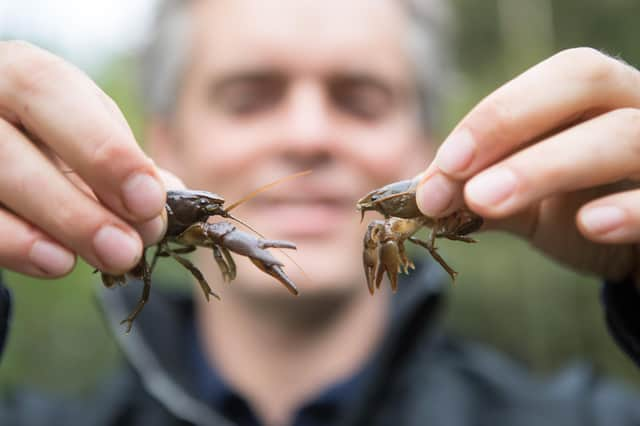Northumberland zoo to play part in safeguarding native crayfish


The visitor attraction, at Eshottheugh Farm, near Felton, has joined forces with the Northumberland Rivers Trust, Environment Agency, and the National Trust on a project to breed and release the native species into the county’s rivers and lakes
A large native crayfish sculpture commissioned by Northumberland Rivers Trust will be installed at the zoo on Friday, December 31 to mark the start of its captive breeding programme.
Advertisement
Hide AdAdvertisement
Hide AdIt builds on the work already undertaken by the partnership to ensure the future survival of the native crayfish in Northumberland, which has some of the country’s last strongholds.
The future of the native crayfish is in perilous danger due to the invasive signal crayfish.
The signal, which originates from America and was introduced in the 1970s, is bigger, more aggressive and out-competes their native white clawed cousins. They also carry a fungal disease known as crayfish plague, which is fatal to the native species.
Maxine Bradley, zoo curator, said: “Northumberland’s rivers have some of the best remaining populations of native crayfish in the UK but the invasive signal crayfish continues to put its future in doubt.
Advertisement
Hide AdAdvertisement
Hide Ad“Together we must do all we can to protect this endangered species or they could disappear forever from our local rivers.
“The new captive breeding programme at the zoo is another step toward our ambition to ensure the survival of the important native white-clawed crayfish.
“We hope the sculpture unveiling will be a talking point for visitors, help draw attention to the work we are trying to do and raise awareness of the steps we can all take to help.”
Northumberland Rivers Trust has been mapping which species are where in local rivers and building underwater barriers to slow the spread of invasive signal crayfish. This is hoping to ‘hold the line’ until a long-term biotechnology solution can be developed to manage the spread of the invasive species.
Advertisement
Hide AdAdvertisement
Hide AdThe partners are also creating remote ‘ark sites’ – safe locations to release white-clawed crayfish.
At Wallington, the National Trust has created a new ark site which will receive its first influx of native crayfish in March 2022. It will also unveil a display tank of captive bred crayfish at its welcome building.